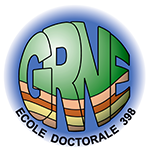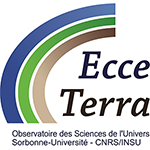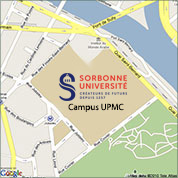Séminaire ISTeP - Douwe Van Hinsbergen
(Utrecht)
Kinematic restoration of the Mediterranean region since the Triassic
In this talk I will present a kinematic restoration of the Mediterranean region using GPlates plate reconstruction software, starting in today's configuration, and going back to the Triassic opening of the Neotethyan Ocean. The reconstruction takes as primary boundary condition the generation and consumption of area in the Mediterranean region as predicted by the Eurasia-North America-Iberia-Africa plate circuit constrained through marine magnetic anomalies in the Central and North Atlantic Ocean. In addition, kinematic constraints from structural geology and paleomagnetism are applied to restore the complex fold-thrust belts and extensional back-arcs and forearcs of the highly curved Mediterranean orogens. Age constraints come from stratigraphic or radiometric dating of rocks involved in, or sealing deformation. In contrast to previously published reconstructions, and as a novelty, we do not incorporate interpretations from sedimentology (e.g. sediment provenance), paleontology, or geochemistry. As a result, this reconstruction remains independent from such constraints and can be used as boundary condition for studies in these disciplines, or these disciplines can be used to independently test the reconstruction, which is strictly kinematic.
I will present the reconstruction as step-by-step restorations of sub-regions of the Mediterranean region, centered around the question how to restore the AlCaPa fold-thrust belt, now occupying the upper nappes of the Eastern Alps, and the north Pannonian-Carpathian region, in its Triassic configuration. This block is widely inferred to have been positioned in between the continental domain of the Dinarides and the Tisza Block of the south Pannonian region. Such a configuration cannot be restored in the light of available constraints, and I will discuss an alternative scenario. Finally, I will address the conundrum of the location of the Paleotethys suture in the eastern Mediterranean region, which according to plate tectonic logic must be there, but is challenging to locate in the field.
07/03/2014 à 12h30, Salle Fourcade (Tour 55-56, 4ème étage)
Egalement dans la rubrique
Chiffres clés (Mars 2025)
L'ISTeP comprend 131 membres dont :
Permanents (66)
- Professeurs : 17 (+2 PAST)
- Maîtres de conférence : 26
- Directeurs de recherche CNRS : 1
- Chargés de recherche CNRS : 1
- ITA : 19
Personnels non permanents (65)
- Collaborateurs bénévoles / émérites : 17
- Chaire de professeur junior : 1
- Enseignants-chercheurs contractuel : 2
- 1 MCF accueil en délégation
- ATER et Post-Docs : 9
- Doctorants : 32
- ITA-BIATSS : 3





